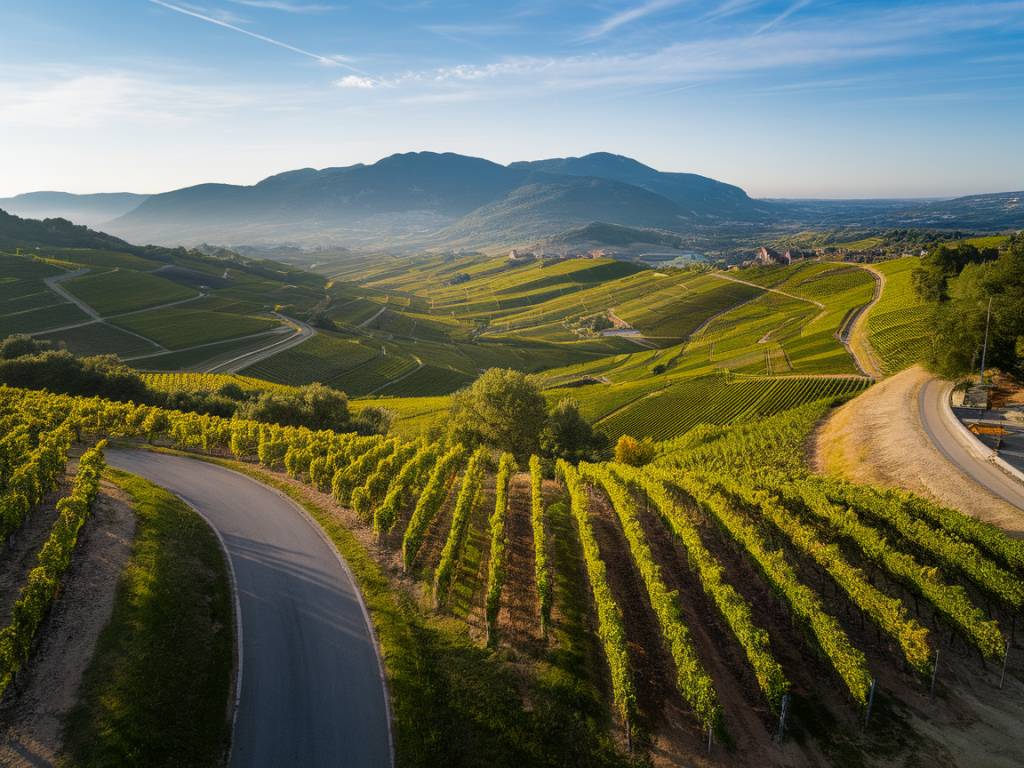Imagine a land where rolling hills are adorned with meticulously tended vines, where each glass of wine tells the story of its unique terroir and centuries-old tradition. Welcome to Alsace, a hidden gem for wine lovers seeking an immersive journey through one of France’s most captivating wine regions. While Alsace might not have the massive fame of Bordeaux or Burgundy, it more than makes up for it with its charming villages, diverse varietals, and an intimacy that invites every visitor to become part of its story.
Discovering the Locale
Nestled in the northeastern part of France, bordered by the Rhine River and the Vosges Mountains, Alsace offers a unique combination of French and German influences. This intermingling of cultures is immediately evident in both the architecture and the winemaking methodologies you’ll discover as you wander through picturesque villages like Ribeauvillé, Riquewihr, and Eguisheim.
Each village seems to compete for the title of most enchanting, with their colorful half-timbered houses, cobblestone streets, and overflowing flower boxes. The backdrop of verdant vineyards is dotted with charming cellar doors, inviting you in for an intimate tasting experience.
The Grape Varietals of Alsace
Alsace is renowned for its white wines, which constitute over ninety percent of its production. Among these, the most distinguished varietals are:
- Riesling: Often considered the king of Alsace wines, Rieslings here range from dry and mineral-driven to late harvest sweeter styles, offering incredible versatility and depth.
- Gewurztraminer: Known for its aromatic complexity, this wine has notes of lychee, rose, and spice, making it a perfect companion to the region’s strong cheeses or spicy Asian cuisine.
- Pinot Gris: Rich, full-bodied, and often slightly smoky, Pinot Gris from Alsace offers lush fruit flavors balanced by a brisk acidity.
- Pinot Blanc: Fresh and lively, this varietal offers a more understated profile that pairs beautifully with seafood and light meats.
- Muscat: Naturally sweet and highly aromatic, Muscat is best enjoyed as an aperitif.
While reds are less common in Alsace, don’t overlook the Pinot Noir, which is growing in acclaim for its elegant and lighter style, perfectly suited for a chill summer’s day.
Exploring the Alsace Wine Route
The Alsace Wine Route, winding through over 170 kilometers of vineyards and charming villages, is a must for any wine enthusiast. Whether you opt to drive, cycle, or even walk parts of it, the route offers endless opportunities to stop and savor the local produce. Each village has its unique flair, with local winemakers eager to share their passion and stories behind each bottle.
From the medieval streets of Kaysersberg to the enchanting charm of Obernai, you can indulge in tastings that offer insights into the winemaking process and the terroir’s influence on each varietal. It’s an experience that brings together the warmth of local hospitality with the expertise of generations of viticulture.
Hidden Gems Worth Visiting
For those seeking to uncover the heart and soul of Alsace’s wine culture, here are a few boutique vineyards that promise a memorable tasting experience:
- Domaine Weinbach: Situated in the town of Kaysersberg, this family-run estate is celebrated for its exceptional Rieslings and Gewurztraminers. The visit promises not only outstanding wines but also a warm welcome and an enlightening exploration of biodynamic winemaking practices.
- Maison Trimbach: Located in Ribeauvillé, this historic house dates back to 1626. Renowned for its precision and elegance, a tasting here offers a deep dive into timeless Rieslings and a view into an unwavering family tradition.
- Zind-Humbrecht: Situated in the village of Gueberschwihr, this vineyard sets the bar for organic and biodynamic viticulture in the region. Their intense wines, particularly the Grand Cru bottlings, are a revelation that lingers on the palate and in the memory.
Each of these estates offers something unique – a fresh perspective, a new favorite wine, or perhaps a story to carry home with you.
Pairing Alsace Wines with Local Cuisine
No exploration of Alsace’s viticulture would be complete without indulging in the local cuisine, where you’ll find the perfect pairings for your wine discoveries. Alsace is a region where hearty meets delicate, and tradition marries innovation:
- Choucroute garnie: This hearty dish of sauerkraut served with sausages and meats pairs perfectly with a dry Riesling that can cut through the richness with its acidity.
- Tarte flambée: Often referred to as Alsatian pizza, this thin dough topped with cream, onions, and lardons if best enjoyed with a chilled Pinot Blanc.
- Munster cheese: The strong, pungent Munster cheese finds its match with the aromatic complexity of Gewurztraminer.
These pairings not only highlight the versatility of Alsace wines but also elevate the overall culinary experience, making each meal a delightful discovery.
When to Visit Alsace
While Alsace is a year-round destination, the best time to visit for wine enthusiasts is during the harvest season, which runs from September to October. During this time, the region is abuzz with excitement, and numerous wine festivals offer a chance to celebrate the year’s produce in true Alsatian style.
Springtime is also beautiful, as the vineyards come to life with blooming flowers, and you’ll find fewer tourists than in the peak summer months. Winter offers another kind of magic, with the backdrop of snow-capped mountains and the chance to indulge in cozy tastings followed by heartwarming Alsatian fare.
Embracing the Alsace Wine Experience
Exploring the hidden vineyards of Alsace is more than just tasting wine; it’s about immersing yourself in a region where history, culture, and viticulture have evolved hand in hand. It’s a chance to disconnect from the fast pace of everyday life, to meander through vineyards, and to engage with the stories and people behind each bottle.
Alsace invites you to taste, explore, and fall in love with its hidden vineyards. Whether you’re a seasoned oenophile or a curious beginner, this region offers an experience that resonates deeply, leaving you with a newfound appreciation for its wines and an indelible mark on your travelogue.




